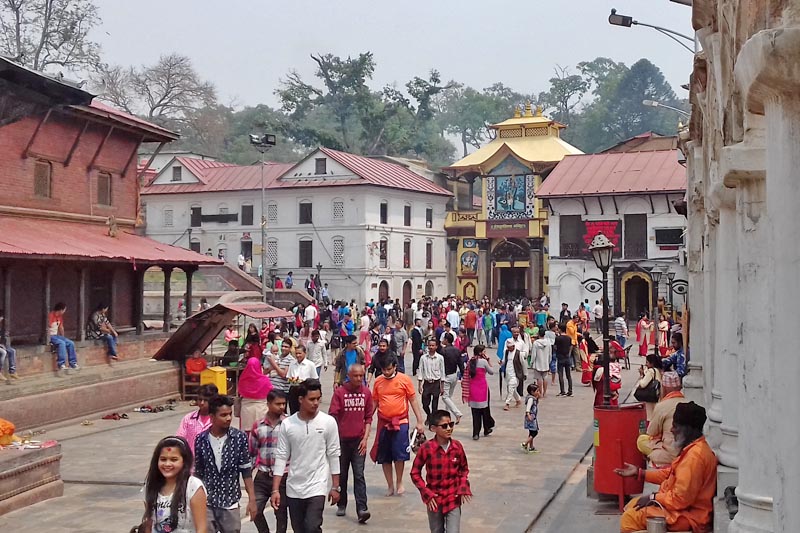Government develops new building code for Pashupati area
Kathmandu, December 21
The government has developed a building code for construction of infrastructure around the holy site of Pashupatinath temple.
According to a circular issued by the Ministry of Federal Affairs and General Administration to all local levels, the building code was developed and implemented to protect religious and cultural importance of the Pashupati area and maintain a clean environment in the sacred place of Hindus around the world.
This building code will be applicable in and around Pashupatinath temple; Jayabageshwori, Tamreshwor and Nirvanewshwori temples, Bhandarkhal, Chabihar and Dhando Chaitya, Chandrabinayak temple, Bhandareshwor and Kutibahil. The areas also cover Tribhuvan International Airport, Gaushala, Mitrapark, Siphal, Sinamangal, Ratopul and Chabahil chowk.
“After the commencement of this code, house or building shall be constructed in typical Nepali style. It will be applicable even in the case reconstruction and renovation of any house or building located in the areas. Before reconstructing or renovating the structure, the concerned owner shall have to submit its previous building permit to the Pashupati Area Development Trust Governing Council for approval,” the code states.
The code has defined the setback, right of way, land use percentage and light plane for the construction of any building or house. The council may grant permission for construction of building or house in such a way that it does not exceed 35 feet in height including the terrace if it does not cause an adverse impact on the environment, temples, shrines and stupa located in Pashupati area.
Any building of typical Nepali style or Rana era will not be allowed to be demolished for the purpose of construction of modern concrete structures. “Permission may be granted for demolition of ancient buildings on condition of reconstructing them as they were,” the code states.
The code bars anyone from constructing a building in which RCC and steel frame is visible from outside. “RCC and steel frame shall be covered with bricks without cement and lime. Door and window frames shall be made of wood. Collapsible gate, zinc shutter and iron railing will be prohibited,” it states, adding that at least 25 per cent of land shall be used for greenery purpose.






